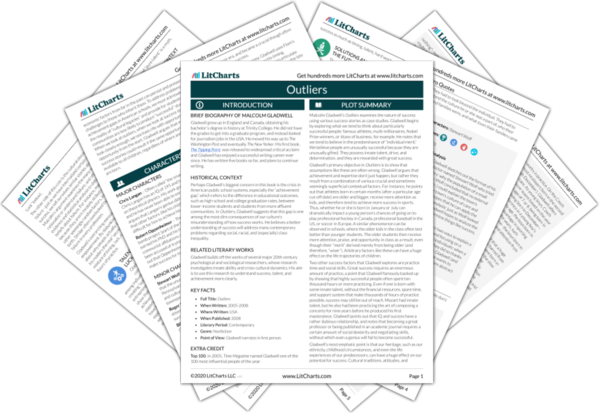LitCharts assigns a color and icon to each theme in Outliers, which you can use to track the themes throughout the work.
Talent, Opportunity, Work, and Luck
Timing and Historical Context
Privilege, Heritage, and Cultural Background
Solutions and Implications for the Future
